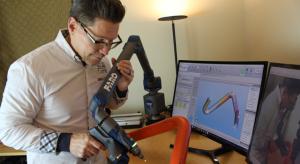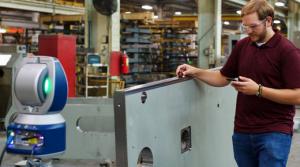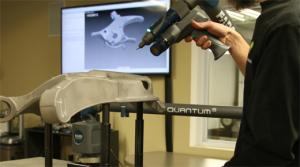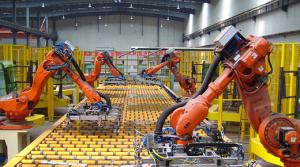Content by Ryan E. Day

Thu, 04/11/2019 - 12:00
Traditionally, technical jobs have been underrepresented by women. But that's changing, says Emily O'Dea, commercial services process manager at Hexagon Manufacturing Intelligence.
“Without a doubt we're definitely outnumbered,” says O’Dea. “I…
Tue, 03/12/2019 - 12:03
I love standards, and whether you know it, you love standards, too. For example, let’s say a bulb in your lamp goes bad. You drive down to the local hardware store, buy a bulb, come back home, change out the bulb, plug the lamp back in, and... it…
Wed, 02/20/2019 - 12:03
In the manufacturing universe, metal tube fabrication is a world of its own. That being said, the requirements for developing a new world-standard solution for tube bending are common to all manufacturing—be faster, more accurate, and more…
Wed, 01/16/2019 - 12:03
Machine-tool manufacturer Cincinnati Inc. has a heritage of building quality products and surviving great challenges. Founded in 1898, and based in the United States, Cincinnati has survived both the Great Depression and Great Recession. Cincinnati’…
Tue, 12/18/2018 - 12:01
Psychology is an important element in organizational excellence for managers. In particular, the ability to face one’s fears, develop resilience, and adapt to change fosters success for a manager as well as for the company and all its employees.…
Tue, 12/11/2018 - 12:03
As of the 2010 Census, there were 27.9 million small businesses registered in the United States. That’s a lot of competition. To thrive and grow in such a competitive environment, business owners must make wise decisions, commit to high-quality…
Wed, 11/14/2018 - 12:03
BioBridge Global (BBG) is a parent organization for four subsidiary organizations, three of which are involved in production activities, and they’re all around regenerative medicine, including blood components, clinical laboratory testing, and cell…
Tue, 11/13/2018 - 11:01
One of the unique aspects of Finch Therapeutics is that although its product does not fall easily into any regulated category and thus is not FDA-approved, the company has been working closely with the agency for at least five years. The FDA has…
Mon, 10/01/2018 - 12:02
The fourth industrial revolution is upon us. Collecting real-time production data is becoming more common as enterprise-wide software develops into a tool that enables transformative gains in productivity. Although not common, there are “lights-out…
Thu, 08/09/2018 - 12:03
As manufacturing finds its way through the 21st century, there’s a groundswell change emerging. Organizations are jockeying for competitive position as they endeavor to describe this phenomenon. Industry 4.0, the fourth industrial revolution, and…